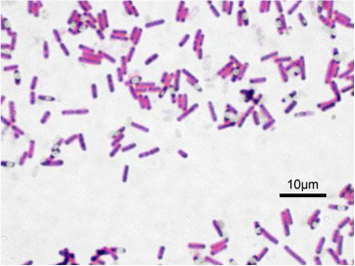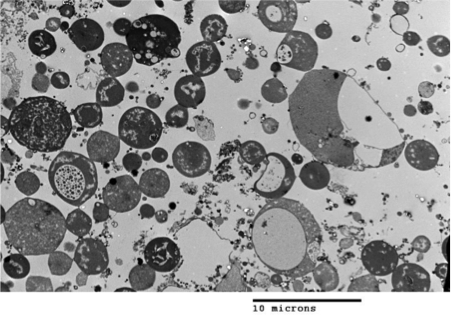Bacteria and the immune system
How bacteria and the immune system interact
By L. Kunst (MD)
If your garden were free of chemical pollutants, you could happily eat a bit of dirt from it without getting sick. In fact, there’s a good chance that your bowel functions would be improved and as a result your general health would perk up as well.
I don’t necessarily recommend you do this, but with this rather bizarre suggestion, I want to illustrate that most bacteria that we come in contact with are actually either quite harmless or even positively healthy for us. Scientific research has shown that children living on a farm are much less likely to suffer from respiratory infections than town children because they are in more intensive contact with animals and because of that with more diverse types of bacteria than their urban counterparts.
Contact with aggressive, harmful bacteria occurs most often through contact with infected people; via coughing, touching or contact with infected faeces, or by eating food or drinking water that is infected. Sometimes the infection is carried by sick animals - we call that zoonosis. Examples of this are Lyme’s disease and Q fever.
The external features of a bacteria can be described as being like a microscopic strawberry. The difference being that the little yellow seeds on the skin of the strawberry are actually numerous tiny antennas on the outside wall of the bacterial cell. Bacteria communicate with each other and their surroundings (cells in the host body) via these antennas. They not only give off signals, but they receive them as well. Sometimes the bacteria broadcast messenger molecules – these are toxins. The immune system recognizes bacteria by how they “look” – just like we recognize the difference between a strawberry and a raspberry. Antibiotics work in the same way. They recognize the external features of the bacteria and this recognition triggers the first step in their fight against these aggressive bacteria.
Of course, the actual process of the antibacterial struggle is very much more complicated than this, but it does trigger certain effects that we recognize. For example, fever, redness, soreness in the infected area and pain when the infected body part is moved. The aggressive bacteria mostly lose the fight with the immune system and/or the antibiotics that have been able to track it down via signals from its antennas. The antennas are both their most effective weapon and their greatest weakness. When bacteria see that they are losing the fight, they drop their ‘weapons’; adapt their external features, so that they are no longer recognized by their ‘enemies’. By losing their antennas, they also lose the capacity to communicate as well as most of their aggressiveness, but they can survive. Unfortunately, they do more than that.

bacillus subtilis
Despite their external metamorphosis (click for illustration and explanation of pleiomorphic bacteria), they retain their unique bacterial identity – their DNA - and this can hide anywhere in the body. No longer bothered by the immune system, they can still multiply within cells, albeit at a much slower pace. The patient thinks that he or she is better, but over time, an increased bacterial DNA load builds up as a sort of slow release vapour that manifests itself in the form of recurring infections or as a chronic inflammatory disease.
Cells that have been infected by this bacterial DNA are in due course recognized by the immune system as suspect, and are attacked in a chronic inflammatory process. This is called an a-bacterial infection because standard testing does not detect any recognizable bacteria. In fact, it is impossible to detect these bacterial cell forms using standard tests, so they are normally never “seen”. Once the cells of the immune system itself are also infiltrated by these stealthy bacteria, the system becomes so dysfunctional that the result is a pernicious inflammatory cycle.

bacillus subtilis
Examples of this include all forms of rheumatic diseases, chronic Lyme’s disease, chronic Q fever and possibly even Alzheimer disease. In fact, this is true for the majority of all chronic ailments that effect people today – often in the second half of their lives.
Antibiotics are ineffectual in the face of these pleiomorphic bacteria because they do not have normal external membranes with recognizable ‘antennas’. The only means of dealing with these damaging infections would be to find a treatment that recognizes and can tackle all bacterial remnant forms, including their DNA.